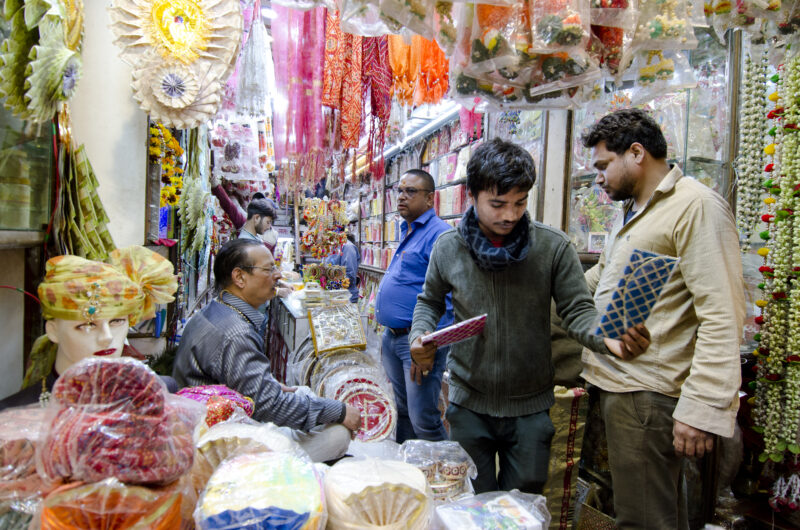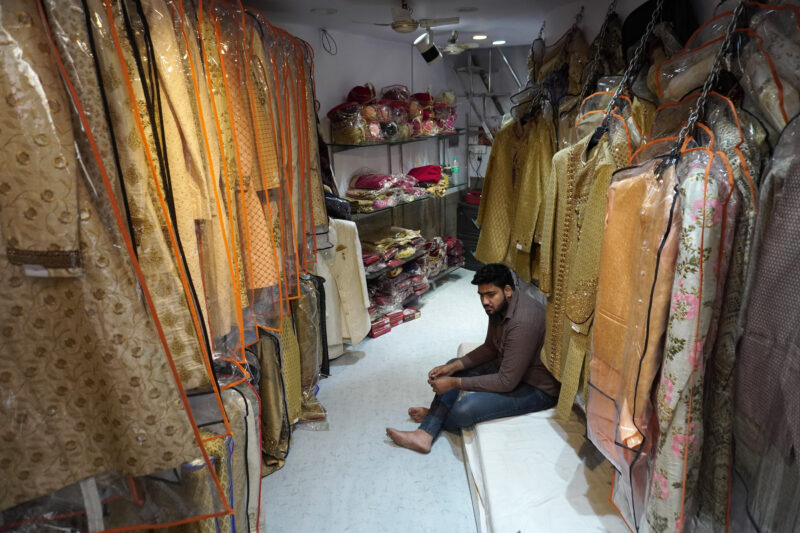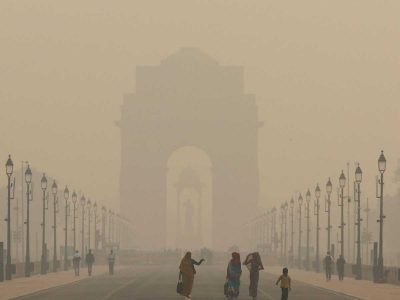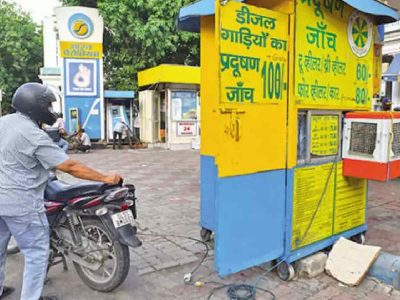Ekta Vohra, who has been running a wedding planner firm in Noida for the last 13 years, was sceptical ahead of this wedding season as things were only returning to normal post pandemic.
“When restrictions were lifted, we thought people would be more conservative with events and other rituals but luckily we’ve been proven wrong and things are as good as they were in the pre-pandemic era,” said Ekta of Wedding Alliances.
“Everything is on in full swing now and things are going great which we didn’t expect. We’ve got bookings in advance. The reason behind this surge in business is that people did not panic when the third wave was announced. They were alarmed but chaos did not spread, the cases did not go up which took the fear out of people’s mind and now it’s reflecting in our business,” she added.
Statistics prove her observation to be correct. The Confederation of All India Traders (CAIT), following a study of 35 cities and 4,302 service providers, estimates 35 lakh marriages worth 3.75 lakh crore this season.
Smita Saurabh, owner of Wedlock Events, said, “The response has been positive, and one can see the business starting to liven up again. Since November of this year, we have organised 15 to 20 weddings across Delhi and have got bookings lined up till April.”
Ekta felt emotions associated with weddings are the reason why this business has grown to be such a large sector and even pandemic couldn’t make a significant dent to it.
A wedding is a union of two families, not just two individuals, and it is the day everyone eagerly looks forward to, explained Ekta.
Those associated with businesses related to wedding are also buoyant.

The popular bridal orchid flowers, marigold and jasmine are in high demand.
According to Himanshu Pandey, a flower seller, flower vendors are certain that this wedding season would be successful and help them recoup majority of their losses.
“We are getting orders in big quantities now,” said a vendor in Karol Bagh flower market.
A new trend
Pandemic had forced people to restrict their guest list. That has turned into a habit as the guest list is getting shorter while there are more activities. The approach that was initially taken as a precautionary step during Covid is now being widely accepted. Weddings with 500 guests are not uncommon nowadays.
“People have started having weddings with fewer people alongside rapidly increasing popularity of destination weddings. Destination weddings have become the go-to choice these days for couples and the most famous spots are Jaipur, Alibag, Goa, Udaipur Agra and Jim Corbett,” said Ekta.
Surbhi Chauhan, a 26-year-old product manager working in a private firm in Delhi, is getting married in January.
Her family wanted a large, elaborate Indian wedding with 500-800 guests.
“However, I want a destination wedding in Udaipur, and we cannot have 800 guests on a destination wedding. It’ll cost us way more than what we can afford,” said Surbhi.
“The wedding may be reduced in size, but the prices have not decreased. In fact, we’re spending twice as much as usual on hotel reservations, which are hard to get,” added the bride-to-be.
Surbhi says that decoration also costs more nowadays since according to merchants, importing lighting from China has become a costlier affair.
Clients have got started to get involved a lot in the wedding process now.
“Couples are more involved in the whole process now,” said Smita.
“There have been times when my clients have set up makeshift offices filled with their requirements, or they’ll just pick out designs from the internet to make me understand how they want their wedding to turn out. Earlier, people would leave it all to the planners, so this new approach both helps and hurts us.”
Smita recalled an experience in which his entire team faced difficulties in trying to convince the client.
“The bride wanted the exact replica of a design that she had picked from Pinterest. It had less elements and patterns which made her think the dress would cost less. But that wasn’t the case and convincing her for the same created some difficulties for my entire team,” added Smita.
“In the end, we had to convince the bride to make choices from our designs. Some people come with unrealistic expectations these days. It’s like sometimes families want stuff worth Rs 50,000 but for Rs 5,000,” she said further.
Ekta felt that a wedding nowadays is becoming more of a project and is being influenced by celebrities.
“Couples nowadays are influenced by the aesthetic features and the idea of a perfect wedding as seen on Instagram. People want well-known artists, singers and actors to perform at their wedding,” she explains.
“Also, there are now several celebrations at multiple places, multiple dance performances, game nights rehearsals for everything which was not the case earlier when rituals such as Haldi and Pooja were performed only with close relatives and family. However, now practically everyone is invited to all the ceremonies. Even wedding cards must meet certain standards.”

The sad bit
However, not everyone is happy. The traditional markets of Delhi do not seem to be recovering from the losses and neither do they have any hopes of recovery, considering the current situation of the market.
Karan Yadav, 40, who works at a sherwani shop in Chandni Chowk, which is known as the hub for wedding shopping, said they are having trouble even in paying the rent.
“It doesn’t feel like a wedding season to us. There are days when we open and close the shop without selling anything,” said Yadav.
Yadav said that other shopkeepers selling articles related to wedding are also struggling.
Yadav attributed the current market situation to fierce online competition and a loss in the value of the Chandni Chowk market post Covid.
“It’s not that we have not tried different things like slashing prices and enabling discount offers for the first time, but nothing seems to be working,” said Yadav.
G.P. Gandhi, who operates a silk saree business in Chandni Chowk, said he had stocked up on lehengas and sarees in advance in the hope that they would sell, but the wedding season is about to finish, and he’s only recovered around 25% of his investment. He’s having difficulty even paying his employees.
“We receive only 10 to 12 people every day, and just a handful of them make a purchase. We have items ranging between Rs 5,000 and Rs 50,000. So I don’t believe pricing is an issue. Instead, customers typically enquire about the designs and a variety of products, which we have also brought in. But the results have been negative,” added Gandhi.
Follow us on:
Instagram: instagram.com/thepatriot_in/
Twitter: twitter.com/Patriot_Delhi
Facebook: facebook.com/Thepatriotnewsindia





